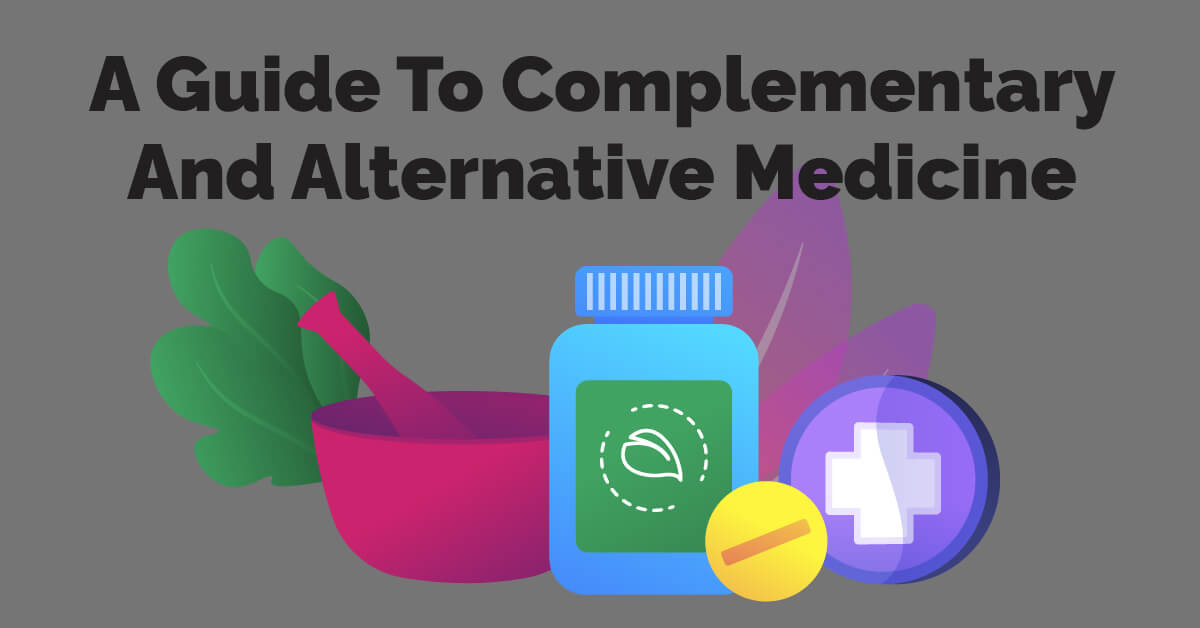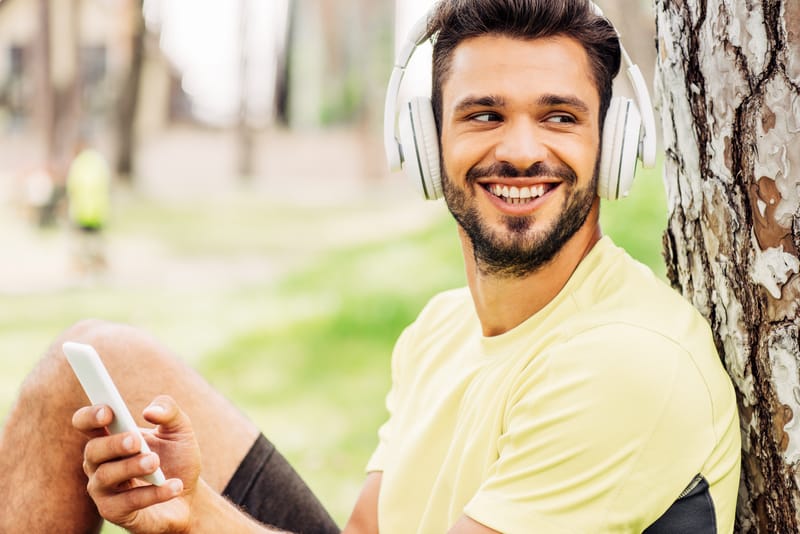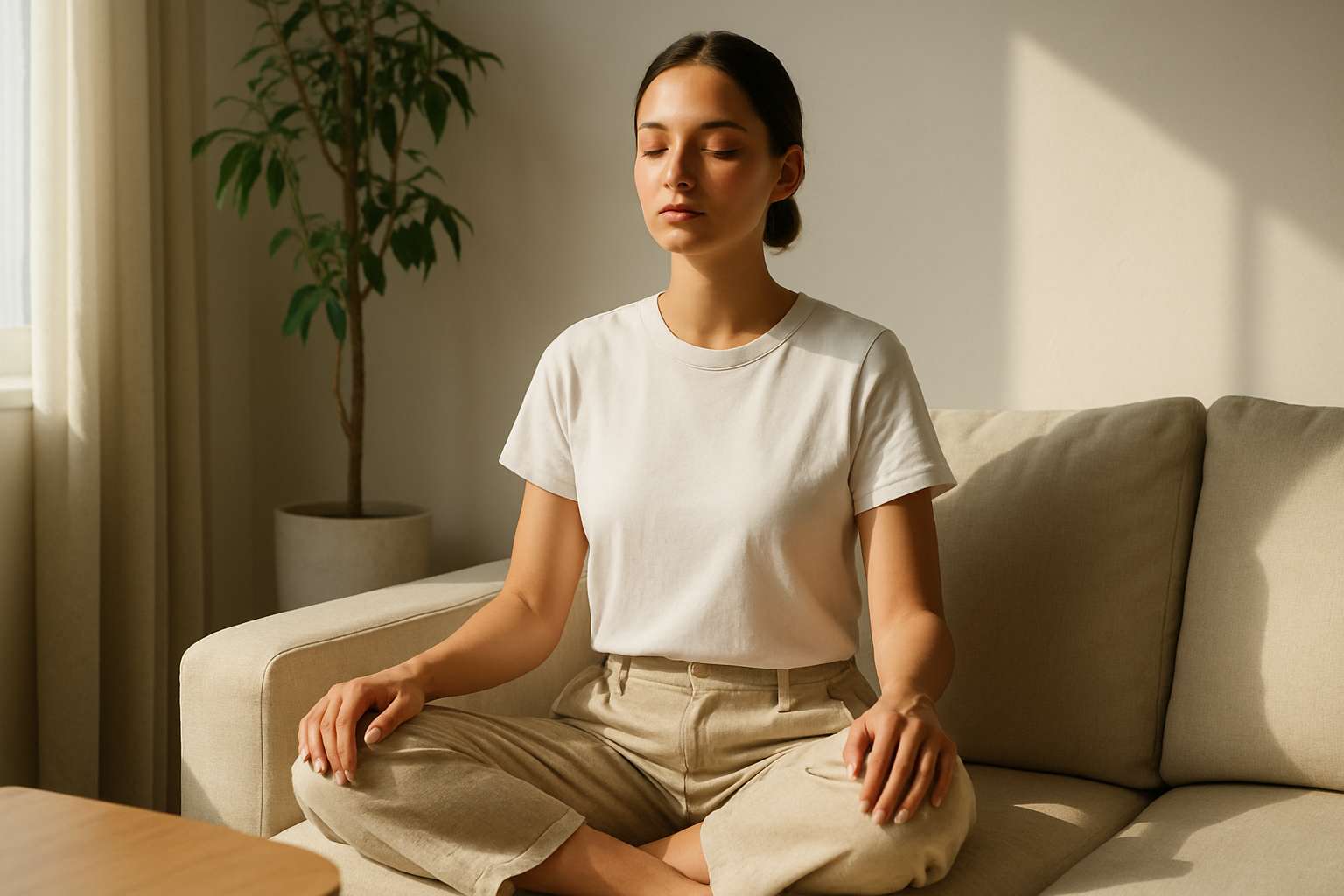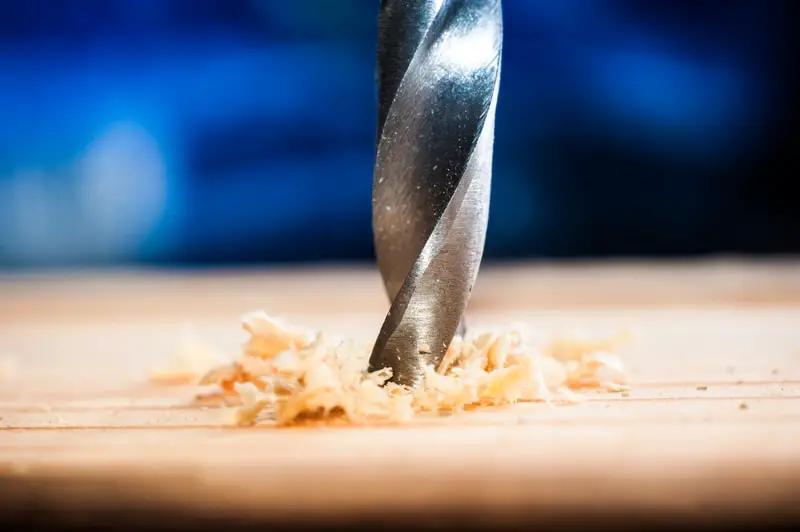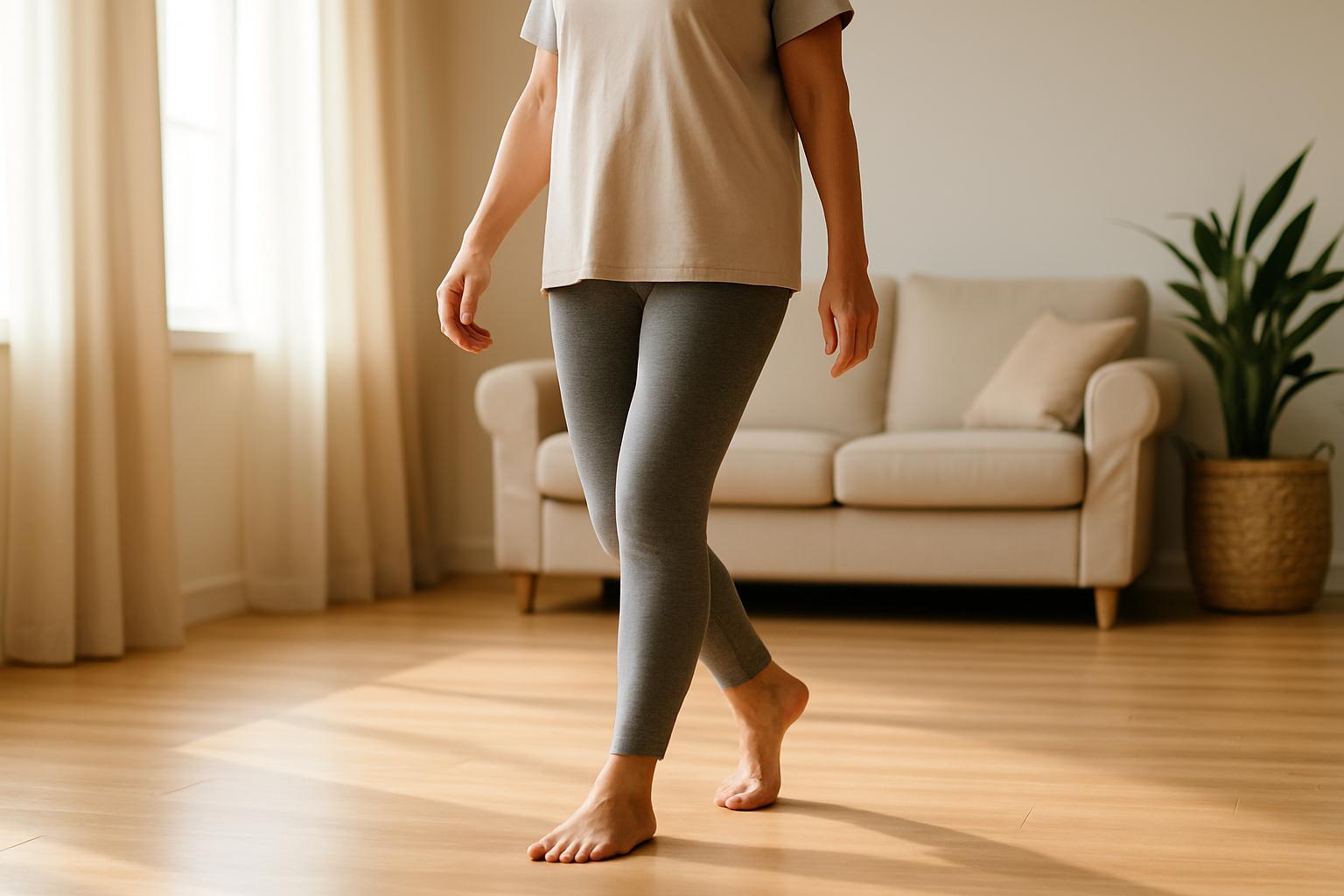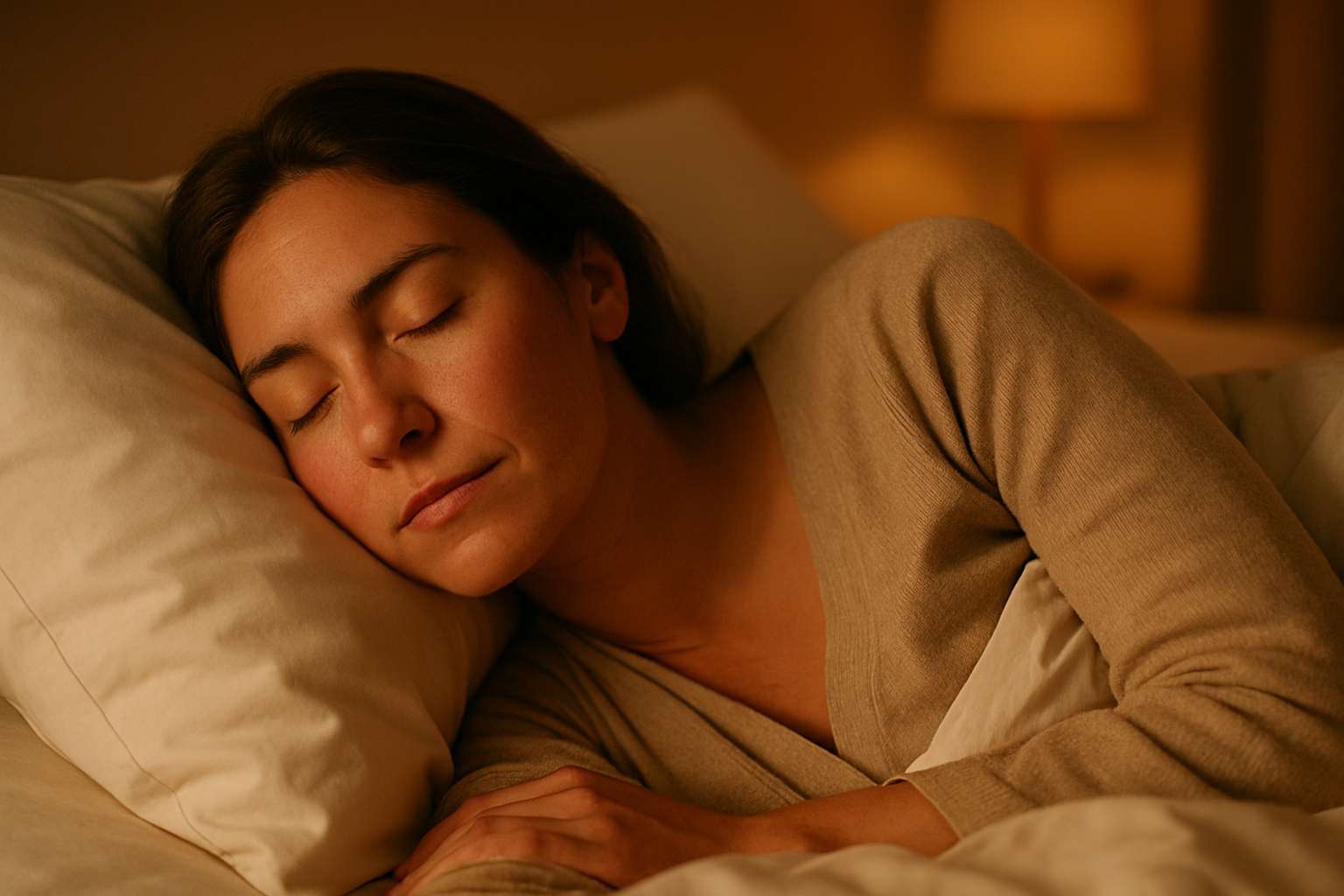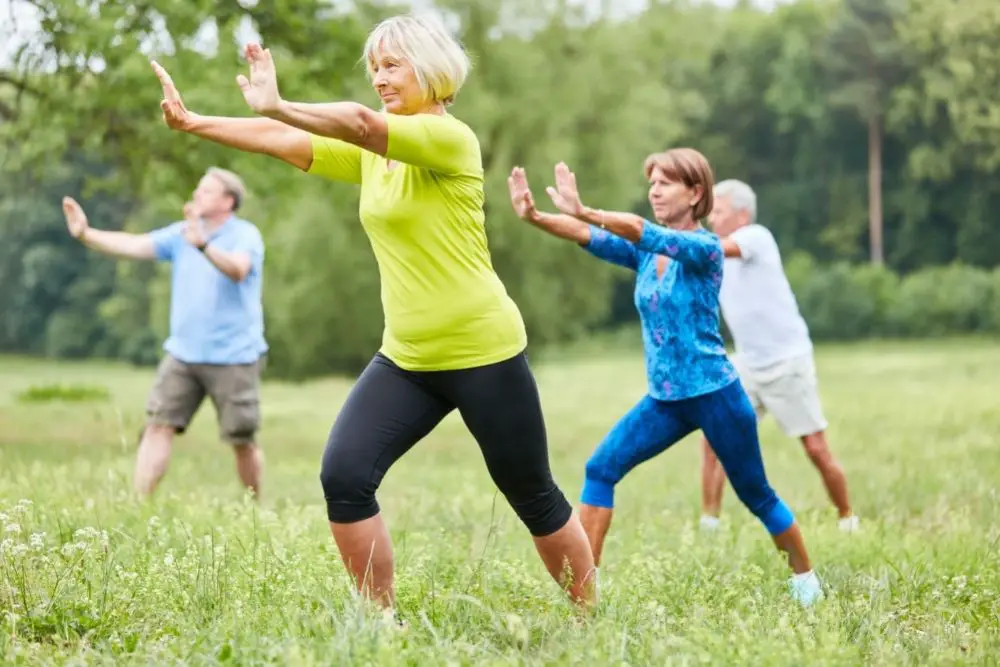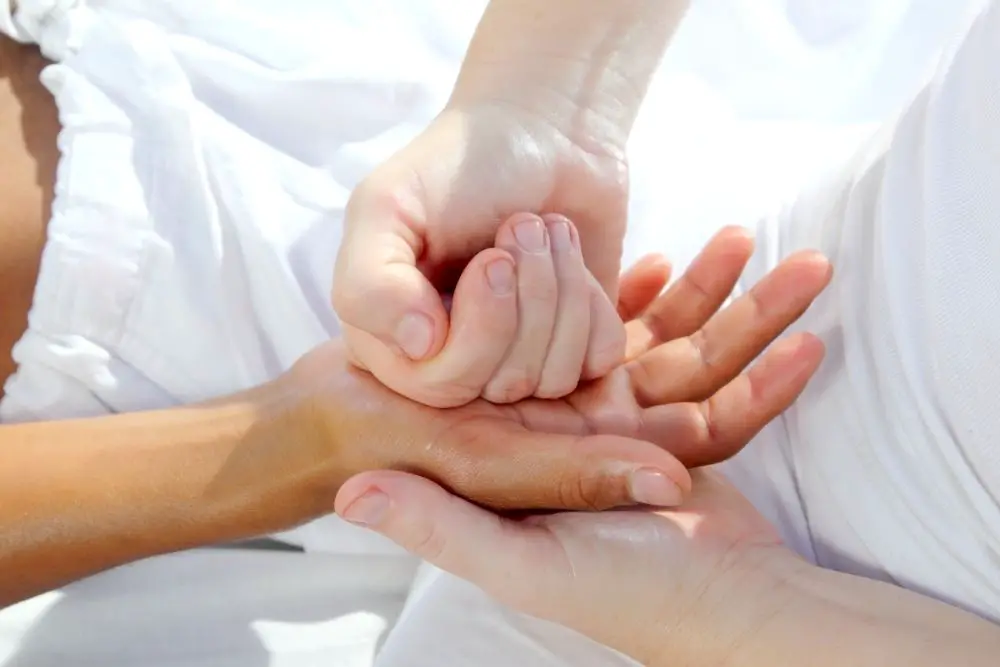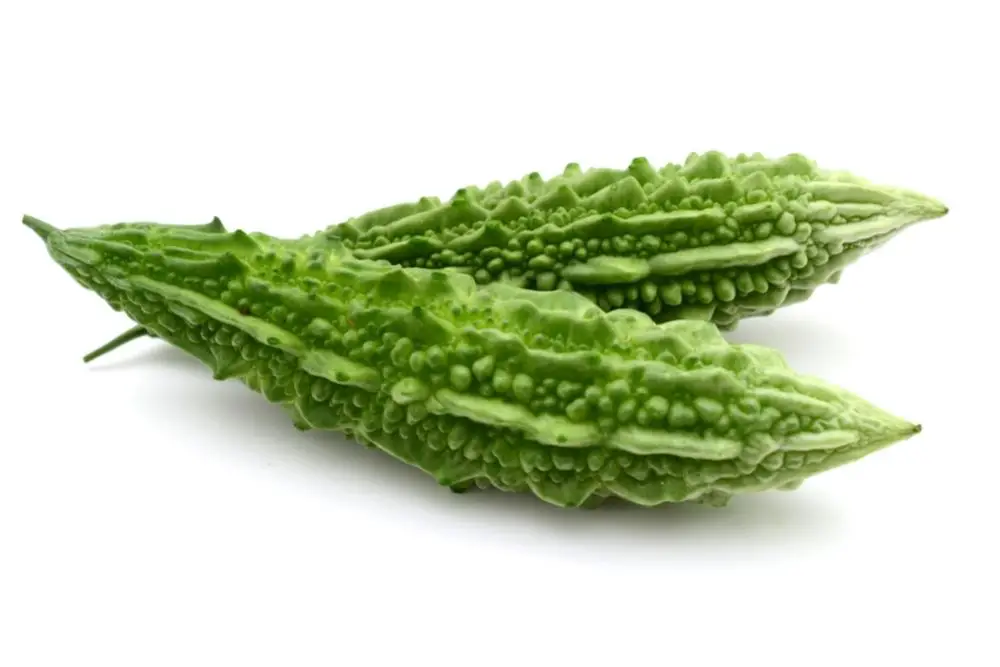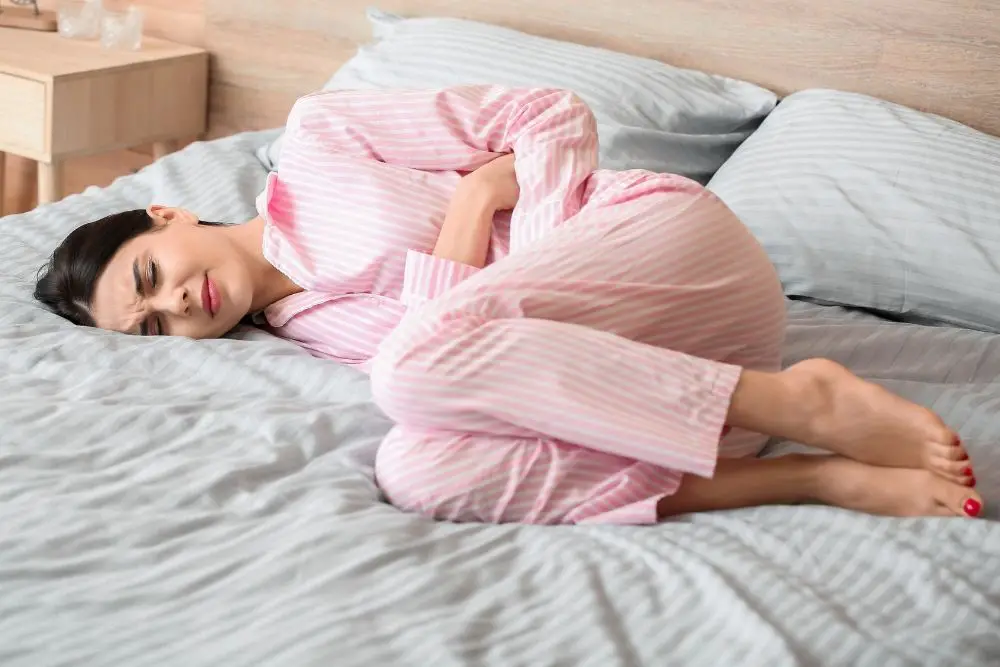This insightful guide will help you gain a strong understanding of complementary and alternative medicine.

Complementary and Alternative Medicines (CAMs) are the names given to treatments that fall outside of what is now considered mainstream medicine.
Some CAMs treatments have been practiced for thousands of years, long before modern science rose to prominence.
While there are many people who are dismissive of CAMs treatments, more and more evidence is appearing to back up many of these traditional methods. Many medical facilities use a combination of CAMs and Conventional Medicines to treat their patients.
Some forms of CAMs – most notably meditation and Yoga – are widely accepted in the fields of medicine and psychology as effective ‘holistic’ treatments for depression and recovery from serious injury.
Today, we will be looking at what CAMs are, what makes them different from Conventional Medicines, and how they can help you with injuries and illnesses.
CAMs have been used for thousands of years and we cannot cover everything about the field in a day, so here is a beginner’s guide to Complementary and Alternative Medicines.
Table of contents
What are the differences between CAMs and conventional medicines?
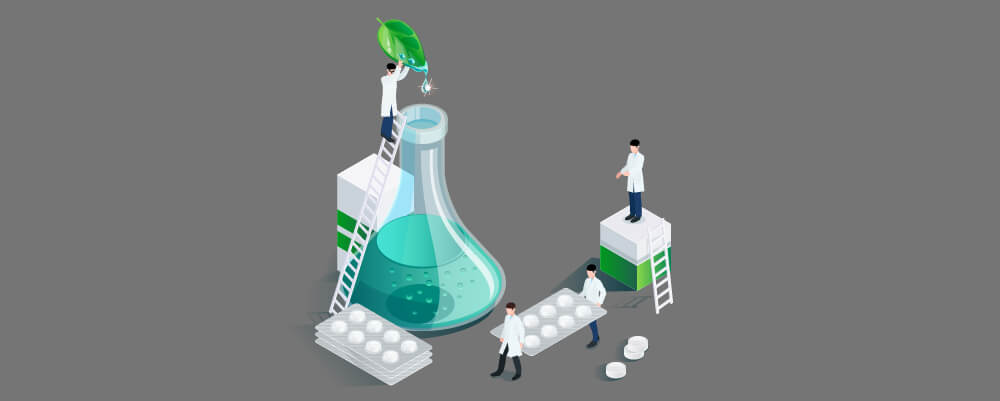
Before we go any further, we need to understand what CAMs and Conventional Medicines are. As well as, looking at the differences between them.
Let’s start by defining CAMs.
Complementary and Alternative Medicines (CAMs)
Complementary and Alternative Medicines (CAMs) are any medicines and treatments that are considered outside of mainstream healthcare.
The term is a catch-all phrase that covers everything from Acupuncture to Yoga and even Chiropractic therapy. Many CAMs treatments have been used since ancient times and are still practiced widely today.
Many CAMs methods have made their way into Conventional Medicine over the years – for example, using meditation to manage anxiety.
Holistic approach
based on historical & cultural backgrounds
One of the main differences between CAMs and Conventional Medicine is that CAMs take a holistic approach to treatments.
The OED defines holistic medical practice in the following way – ‘characterized by the treatment of the whole person, taking into account mental and social factors, rather than just the symptoms of a disease’
CAMs draws on the idea that was present in many of the early forms of medicine – the whole-body approach. They explore the idea that we need well-rounded physical (body), mental (mind), and spiritual (soul) health to truly be well. And that a problem can be solved in one area of the body by treating another area – as it is all connected.
Requires an active lifestyle
Many fields of CAMs were developed long before the sedentary lifestyle we live now existed. Therefore many of these fields require an active lifestyle to truly reap the rewards of the treatment.
As CAMs focus on whole-body healing, it is hard to ignore the physical side of the treatment. Eating well and exercising frequently are essential forms of CAMs.
However, you will not see any bodybuilding or glamour muscles in CAMs. CAMs focus on finding the natural potential of our bodies. With the idea of building healthy bodies that can deal with the everyday stresses and obstacles of life driving the choices of CAMs practitioners.
Therapies that are diverse in nature & origins
CAMs do not just come from one area of the world. Unlike modern medicine which mostly draws on research done in Europe and America.
CAMs encompass thoughts and philosophies from all corners of the globe. Including techniques from The First Nations, Aztecs, Ancient China, India, and the Middle East. Many of these places are ignored in the world of modern medicine.
CAMs treatments range from hot cupping to meditating, and many things in between. These techniques are possible to include in your life without any hassle.
Conventional medicines
Conventional Medicine is a nebulous phrase that covers any form of medical treatment currently used in the mainstream medical profession.
This covers everything from heart surgery, antidepressants, chemotherapy, and insulin injections – with much more in between.
We say the phrase is nebulous as what is classed as Conventional in the field of medicine changes quickly. Many of the things that are now considered CAMs were once considered conventional. And a few fields of CAMs – Yoga and Meditation, in particular – are becoming Conventional treatments again.
Many people use a combination of conventional and CAMs treatments – this is called integrative treatment.
Types of Complementary and Alternative Medicines
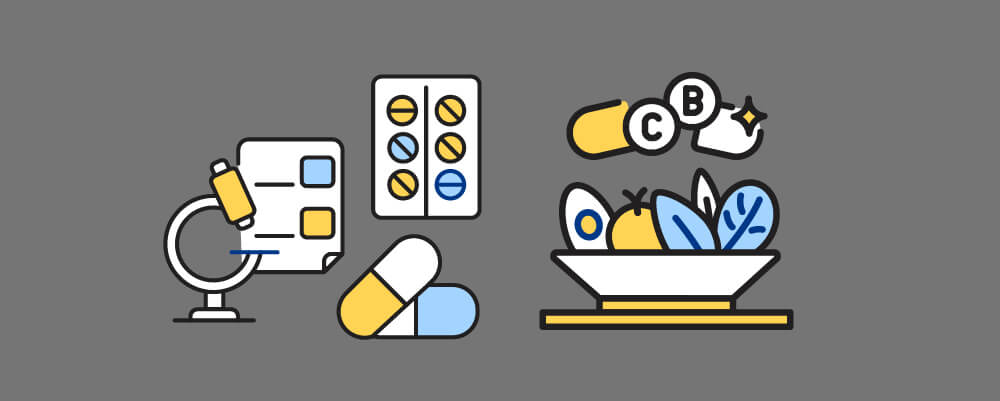
Now, we are going to take a deeper dive into the 5 main types of CAMs. These 5 categories are broad and each covers a wide range of treatments. CAMs treatments are categorized by how they are administered – rather than by age or origin.
These 5 categories are:
- Mind-body therapies
- Biological therapies
- Manipulative and Body-Based practices
- Biofield therapies
- Whole Medical Systems
As we mentioned above the earliest CAMs treatments are thousands of years old, and the newest ones have been discovered this decade. In this section, you will learn how truly diverse CAMs treatments are and see that there are CAMs treatments to suit every lifestyle.
Mind-Body therapies
Meditation, hypnosis, Yoga, Tai Chi, imagery, and more
Many people in the West will be familiar with most of these mind-body therapies. However, a lot of the original philosophies behind these treatments have gotten lost in translation.
For example, hypnosis was originally developed to treat mental anguish. But in the West, we associate it with magic tricks and bad guys in B Movies using it to rule the world.
The key concept behind Mind-Body therapy is that the mind and body are not two separate entities. When the mind is well then so is the body and vice versa. Because of this these therapies show that we can treat the mind to fix the body and the reverse as well.
We have a mind-body connection and by strengthening it we can help our body and mind to heal.
Some of these treatments focus on being able to accept that the body and mind aren’t always in sync. For example, when we are having a panic attack our body is producing a large amount of adrenaline because it thinks it is in danger. Meditation and mindfulness can give us the skills to observe this effect but not participate in it. We can use our minds to tell our body that there is no danger and calm it down.
Let’s take a look at the two most popular types of Mind-Body Therapy:
Yoga
Yoga is a mind-body practice that originated in India. The original and core concepts of Yoga are taken from Hindu religious texts called The Yoga Sutras and the Bhagavad Gita. And Yoga is the Sanskrit word for union.
Yoga combines intentional breathing with posing and stretching. It is designed to relieve pain in the body and to strengthen the mind-body connection. Yoga is considered a form of meditation by many experts.
It is practiced all over the world and there are now many different forms of Yoga.
Meditation
Meditation is a simple activity that has surprisingly profound benefits.
Meditation was originally practiced across the ancient world. By both religious people and philosophers alike.
Meditation is a process where you can begin to separate yourself from your thoughts and your body’s natural reactions. After some practice, it will allow you to separate yourself from negative thoughts and choose positivity instead.
While Meditation classes are still taught around the world. There are many free classes online and available on phone apps. The benefit of taking a class online is that you can tailor the meditation to exactly what you need at that moment.
Biological therapies
Vitamins, dietary supplements, herbs, special diets, and more
This is another area of CAMs that most of us will be familiar with on some level.
Vitamins and dietary supplements have widely been adopted by the medical sciences. Soon, we may no longer consider them a part of CAMs.
The same goes for using special diets to improve health. The more science understands the human body, the more it is beginning to notice how what we eat can affect our bodies.
Special diets are now being used to treat chronic migraines, autoimmune diseases, and arthritis.
The power of plants
Vitamins, herbs, and dietary supplements have long been used by CAMs experts to boost the immune system, treat illnesses, and improve physical and mental health. Despite vitamins only being discovered in the early 20th century.
For example, cloves have been used for pain relief for thousands of years in India. Indians also cook with Turmeric because it is believed to stave off illnesses – it has since been discovered that Turmeric has an incredible range of health benefits.
Matcha (powdered green tea) is another ingredient that has been used for centuries that has recently been proven to be incredibly good for you. It has been credited with the lower Cancer ratings in Japan and contains a chemical called L-theanine that makes us happier by making our brain produce more serotonin.
Essential dietary supplements
Here are 4 of the most popular CAMs dietary supplements:
Iron – most women are iron deficient which can cause fatigue, shakes, and extreme headaches.
Vitamin D – Vitamin D is essential for converting our food into energy. Most areas of the world don’t get enough sun in the winter for us to get enough vitamin D – this is where the supplements come in handy.
Cranberry extract – Cranberry extract has long been used to ease menstrual cramps and reduce acne inflammation.
Evening Primrose Oil – has a vast amount of uses, inducing helping bruises to heal faster, reducing the size of hemorrhoids, easing digestive distress, and soothing sore throats.
Special diets
There are many health issues that require special diets – like Ceoliac’s Disease and Lactose Intolerance.
However, changing our diets affects a surprising range of things in our bodies. Cutting out gluten can reduce bloating and stomach cramps. Cutting out red meat can lower cholesterol. Cutting out dairy can get rid of acne. Reducing salt intake can cure migraines. Raw food diets can give us more energy.
The list goes on. If you have a particular health problem, it could be being aggravated by something you are eating. Starting a special diet may ease the symptoms you are experiencing.
Manipulative & Body-Based Practices
Massage, chiropractic, reflexology, and more
Manipulative and Body-Base practice therapies involve manipulating or moving a patient’s body to relieve pain, stress, or anxiety. See more – lower back pain foot pressure points.
The three most common types of Manipulative and Body-Based therapies are Chiropractic, Massage therapy, and Reflexology. See pressure points in neck you can massage at home. Many people also consider Acupuncture to be a type of Manipulative therapy – but it is officially listed as a Whole Medical System.
Manipulative and Body-Base practices are used to treat physical injuries, as well as anxiety, stress, depression, and chronic pain.
Chiropractic
Most people think that Chiropractors only work with backs. However, they work with all the bones and muscles in the body.
They use their hands to move the muscles and bones around to relieve pain and release tension in the body.
Chiropractic therapy can be used to treat:
- pain from osteoarthritis
- Back pain
- Elbow pain
- Knee pain See – acupressure points for knee pain.
- Shoulder pain
- Anxiety
- Depression
Many chiropractic practitioners will use a range of techniques to help relieve pain and stress. These can include pulling your muscles in opposing directions, sharp movements that jolt the bones, and spinal manipulation with a massage.
Chiropractic therapy can cause bones to make popping and cracking sounds.
Massage Therapy
In some ways, Massage Therapy is very similar to Chiropractic therapy and they are often used together.
However, Massage Therapy focuses less on realignment and your bones, and instead, focuses more on tension relief and relaxation.
Classic Massage therapy works by putting pressure on muscles and soft tissues. The practitioner moves the tissue and muscles around to break down knots and relieve tension. Some forms of massage use heat or other manipulation methods to speed up this process.
There are many forms of Massage therapy. Each of which has its own benefits. If you are interested in Massage therapy then it would be worth doing some research into its different forms before committing to one.
Reflexology
Reflexology is a form of Chinese massage that focuses on the feet, ears, and hands. Reflexology practitioners believe that all parts of our bodies are connected to pressure points in our hands, feet, and ears. Through massaging these pressure points it is believed to be possible to relieve pain across the body.
This massage is done using a single finger with the thumb, and no oil or lubricant. The use of pressure points is very similar to those used in acupuncture.
Here are some other believed benefits of reflexology:
- Boost the immune system
- Clear sinus issues
- Relieve back pain
- Reduce inflammation and joint pain
- Correct hormonal imbalances
- Boost fertility
- Treat nerve issues
Biofield
Reiki, Therapeutic Touch, and more
Biofield therapy draws on the concept that there is a field of energy around and within our bodies. This field can get overwhelmed with negative energy and become out of tune. Biofield therapy helps to reline this energy field and uses a range of tools to get rid of the negative energy.
The three most popular types of Biofield therapy are Reiki, Therapeutic Touch, and Qigong.
Biofield therapy is also known as energy therapy.
Reiki
Reiki was first developed in 19th century Japan. It is currently more popular than it has ever been.
The most basic Reiki involves the practitioner using their palm to draw negative energy out of their patient and use the other hand to replace this with positive energy.
The practitioner’s palm is placed on multiple areas of the body over the session. As Reiki originally came from Buddhism, some practitioners choose to focus on the chakras within the body.
Some practitioners also choose to use crystals to cleanse and store energy. As well as using chakra wands. Others choose to burn herbs during their sessions as well.
The purpose of a Reiki session is to have the practitioner remove the negative energy from your body. This energy can cause both physical and mental pain. Removing the energy is believed to help ease pain and symptoms.
It is also possible to participate in long-distance, online Reiki sessions now.
Therapeutic Touch
Therapeutic Touch uses pressure point massage to help restore a person’s emotional energy field to a positive state. It is inspired by both ancient Chinese and Indian spiritual practices. Once the energy field is returned to a positive state physical healing can happen a lot faster.
The practitioner will sweep their hands across the patient’s body while they search for pools of negative energy. When this energy is found, the practitioner will begin to massage the appropriate pressure points. This will release the negative energy. The practitioner may then choose to add positive energy back into the patient.
Qigong
Qigong (pronounced Chi-Gong) is a form of Biofield therapy which a patient can do on themselves. It is referred to as a subtraction process, with the main concept behind it being the expulsion of negative energy.
Qigong requires a combination of eye movements, breathwork, physical movements, and mental focus. It has a rich philosophy that draws from many areas of Asian culture – most notably the concept of Yin and Yang.
The Dantiens are a series of points that Qigong passes energy through. They are similar to chakras in Hindu philosophy.
Whole Medical Systems
Traditional Chinese Medicine, acupuncture, Ayurvedic Medicine & homeotherapy
Whole Medical Systems are CAMs systems that have a complete philosophy, theory, and practice method. These systems have evolved completely independently of what we call Conventional Medicines.
Whole Medical Systems tend to be older than Conventional Medicine, but there are a few newer practices.
The three most known about Whole Medical Systems are Traditional Chinese Medicine, Ayurvedic Medicine, and Acupuncture.
Traditional Chinese Medicine
Traditional Chinese Medicine (TCM) is one of the oldest whole medical systems in the world and is still practiced by millions across the planet today.
TCM draws its methods from literati theory, Chinese folklore, and Confucian philosophy. It involves many different types of treatments including herbal remedies, cupping, Gua sha, Tui na (massage), and Die da (bone alignment). Food therapy is also used as part of TCM. Acupuncture and Quigong were also originally part of TCM before branching off.
There is also a lot of focus on energy work within TCM. A lot of which is based around the concept of Yin and Yang and the 5 elements. Many practitioners believe that blockages that prevent Qi from flowing around the body result in us developing illnesses and pain.
Herbal medicine in TCM puts a heavy focus on using animal parts to cure diseases.
Ayurvedic Medicine
Ayurvedic Medicine originated in the Indian Subcontinent. The original Ayurvedic texts were believed to be celestial knowledge about health passed on by the god Dhanvantari. Lots of the early Ayurvedic medication was inspired by alchemy.
The practice has evolved a lot over the last two thousand years. But the practice still revolves around ‘the 8 components’:
- Kāyachikitsā – general medicine
- Kaumāra-bhṛtya – looking after children, mothers, and pregnant women
- Śalyatantra – extracting foreign objects from the body
- Śhālākyatantra – treatments of eyes, ears, and mouths
- Bhūtavidyā – treatment of people possessed by spirits
- Agadatantra/Vishagara-vairodh Tantra – the study of toxins
- Rasāyantantra – recovery, and rejuvenation
- Vājīkaraṇatantra – fertility treatments
Acupuncture
There are two forms of acupuncture.
Eastern (or Traditional) Acupuncture uses pressure points to find and treat problems throughout the body. Western Acupuncture uses the needles to stimulate the sensory nerves in the body, causing the body to release sets of healing chemicals. Also, if you are wondering how to relieve ulnar nerve pain, check this quick guide – acupressure for ulnar nerve pain.
Western Acupuncture is not considered a CAMs treatment. Although it does draw from some of the original Acupuncture elements, it does not use the same philosophies or energy work techniques.
The placement of the needles in the body’s meridians (pathways Qi uses to flow through the body) allows the practitioner to remove blockages that starve the body of Qi. Lack of Qi is believed to cause pain and illness.
How Safe Is CAMs treatment?
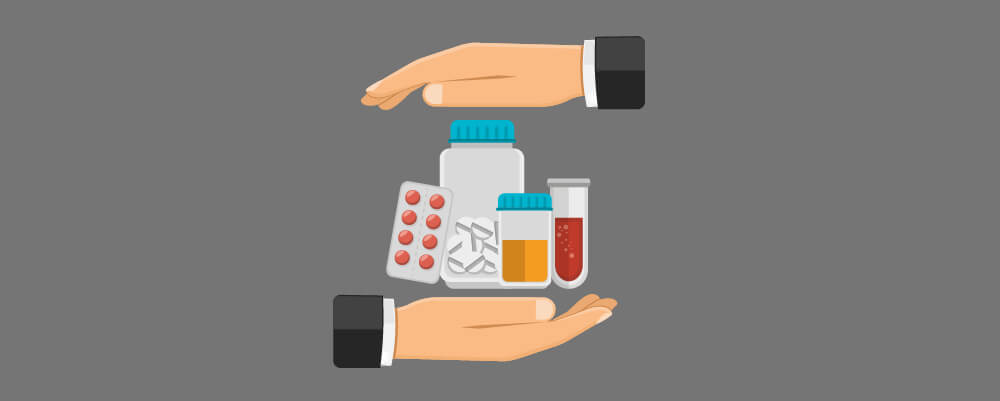
There are a lot of questions surrounding the safety of CAMs practices. A lot of these questions are due to false rumors and a lack of understanding when it comes to treatment. Let’s take a quick look at how to safely practice CAMs.
Consult your doctor before starting treatment
While CAMs are generally considered a safe form of medicine, and most CAMs providers have trained for years before treating patients – it pays to be careful.
Some people see offering false advice and holistic treatments as a way to make easy money. When looking for a practitioner make sure they are appropriately certified.
Particularly, when researching CAMs online, it is important to run any decisions you make by your doctor before taking part in any treatment.
There are a few groups of people who should speak to their doctor before changing anything about their diet or lifestyle.
Other concerns
Pregnancy and mixing CAMs with conventional medication
If you are pregnant, you are probably used to being told that you cannot do things. We’re sorry, but we have more bad news for you.
Many fields of CAMs are off-limits to pregnant women. The body is going through so many changes during pregnancy that it is dangerous to upset its delciate hormonal balance.
You should also talk to your doctor about using CAMs when taking conventional medication. A good example of why you should do this is St John’s Wort (which can be used to prevent headaches and menstrual cramps), this herb stops many birth control pills from functioning properly.
If you talk to your doctor first, you can avoid any disasters like this. Also, if you are struggling with thigh cramps, try using pressure points. Pressure points can be very effective in treating cramps. See more – pressure points for thigh cramps.
What are the benefits of CAMS?
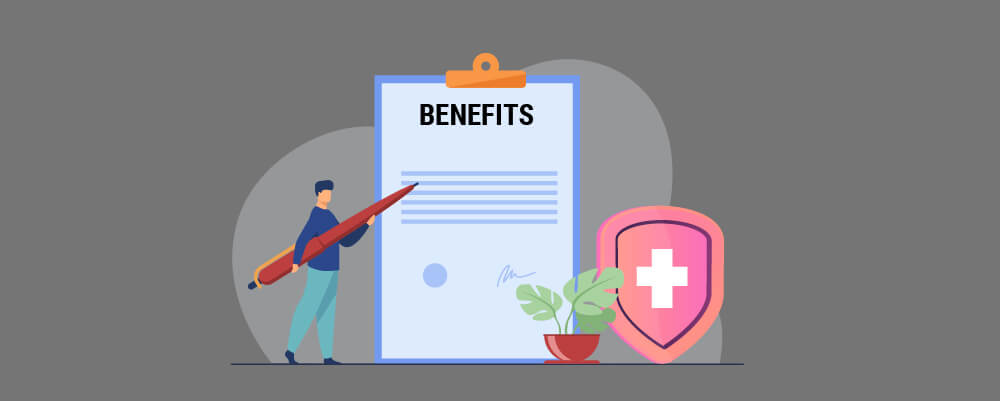
Before we go, we want to spend some time talking about the benefits of using CAMs. While there are many benefits it is a lot more common to hear people talking down the effectiveness of CAMs treatments.
Below are six reasons why someone might consider CAMs treatment alongside (or instead of) Conventional Medicines.
Whole Person Treatments
CAMs treatments aim to improve your whole person (body, mind, and soul) rather than just tackling a small part of your body that currently has an issue.
Many people who have to receive CAMs treatment for one issue have noticed that the treatment has improved other areas of their body.
For example, taking yoga classes for backache will not only solve your back pain and make your back strong – which will reduce the chances of recurring issues. But the classes will also improve your mental health, lower your anxiety levels, reduce stress levels, relieve headache-causing tension in your shoulders, and much more.
Can Help Reduce The Pain Of Illnesses
When your body, mind, and spirit are all in sync and perform well we can see amazing things happen.
Studies have shown that people with strong mental and spiritual health feel less pain.
There are also many physical and herbal CAMs treatments that have shown signs of reducing physical pain.
For example, Turmeric (which has been used for a long time in CAMs recipes) has been recently categorized as a superfood for its ability to reduce inflammation in arthritis sufferers. Cinnamon is known to help regulate blood sugar levels. And chiropractic treatment can reduce even severe back pain.
Improve your immune system
CAMs treatments are built around the concept of strengthening your body, your mind, and your soul. This holistic approach helps to strengthen the immune system in two ways.
Firstly, letting your body naturally fight against infections, rather than relying on antibiotics, helps you to build a stronger immune system according to some CAMs experts.
Secondly, many studies have shown that better mental and spiritual health leads to better physical health.
The immune system and the gut are notoriously sensitive to changes in your mental health. Many people who suffer from IBS are encouraged to receive mindfulness-based treatments to help with their symptoms.
Improves quality of life
As we established in the previous point, many CAMs treatments can make you a happier person.
A vast array of studies have shown that happier people live better and longer lives. Not only do they have stronger immune systems but they also live longer and perform better at work.
Happy people have impressive levels of life satisfaction and they improve the life satisfaction of those around them too.
Being happy also makes you less sensitive to pain and it makes your heart stronger. Studies have even shown that people are more likely to survive cancer if they make peace with their diagnosis.
It’s safer
One of the many benefits of CAMs is that you never have to go under the knife and unless the treatment is done incorrectly, you are very rarely in danger.
Conventional Medicines and operations can be dangerous and lead to lifelong complications for the patient.
It is after they have experienced these complications that many people turn to CAMs as it provides safer treatment and a lot fewer risks.
Most CAMs treatments are non-invasive and focus on healing the body as a whole. Rather than focusing on the one area that is causing trouble.
No side effects
If you have ever taken any conventional medication then you will have most likely experienced side effects.
While some side effects are temporary and worth experiencing to solve the original issue. This is not always the case.
Many medications cause complications that the user will have to deal with for the rest of their lives, even after they stop taking the medication.
This is not something you see with CAMs. While some CAMs are recommended to be practiced over a lifetime (like meditation), this is done so the user can continue to see benefits from the treatment.
Summary

Complementary and Alternative Medicines have been used for thousands of years and draw from ancient knowledge from every area of the globe. Many fields within CAMs have been scientifically proven to offer an effective holistic alternative to modern medicine.
In fact, many fields of Conventional Medicine have drawn from CAMs during their development. For example, many areas of physical therapy are indistinguishable from Yoga and Contrology.
With this guide, you will be able to explore different fields within CAMs and find treatments that will work for you.

Try our Anti-Aging Gua Sha Tool designed to bring out your skin’s natural glow.
Best Gua Sha Product- Anti-Aging: The tool is designed to target 11 specific aging signs such as wrinkles and sagging skin. By following the 7-step routine, users can improve skin firmness and reduce fine lines naturally.
- Enhances Skincare Routine: It works effectively with serums and lotions, boosting absorption and efficacy of skincare products.
- Visible Skin Improvement: Users can expect a smoother complexion, reduced puffiness, and a more youthful appearance.
 P. Sze
P. Sze 